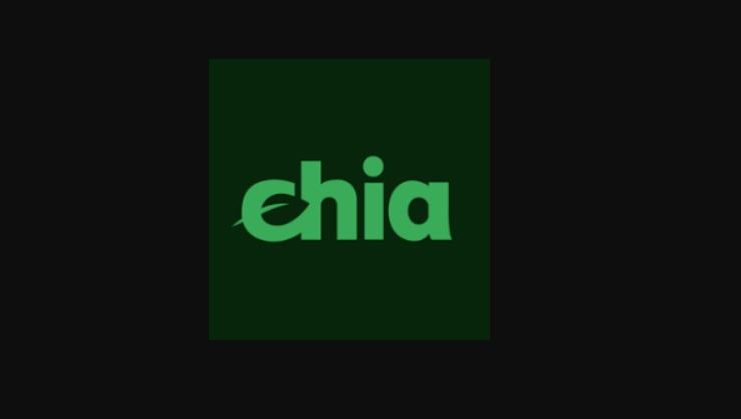This article is in question and answers and answers all of your questions related to fast-rising cryptocurrency CHIA.
CHIA’s popularity can be seen by the fact that Nasdaq Acknowledges Chia (XCH) As An Low-Cost Altcoin With Solid Potential In 2021 in one of their articles.
What is Chia Network (CHIA)?
Chia Network (CHIA) is a blockchain platform for creating and executing smart contracts written in the Chialisp programming language.
Who Created Chia And When?
Chia’s creator is Bram Cohen, an American programmer and founder of the BitTorrent network. In August 2017, he registered the Chia Network company in San Francisco. Jean Hoffman, the company president, is the former head of Nasdaq, Mitch Edwards, the chief financial officer is the former head of Overstock.
Since March 2018, the company has raised about $ 77 million in funding through SAFE agreements. The last round for $61 million ended in May 2021. The company was supported by venture funds Andreessen Horowitz, Galaxy Investment Group, DCM Ventures, True Ventures, Richmond Global Ventures, etc. The company was valued at $500 million during the funding round.
Chia’s main net launched on March 19, 2021.
On May 3, 2021, the developers activated transactions on the network, and Chia started trading on different exchanges.
What Does The Name “Chia” Mean?
Chia is marketed as a “green” cryptocurrency because it uses energy-efficient hard drives and efficient solid-state drives in its mining process.
Emphasizing its “green” nature, the creators named the cryptocurrency the name of the chia plant (Salvia lavandulifolia). Salvia hispanica, commonly known as Chia, is a species of flowering plant in the mint family a plant native to Central America. Chia seeds have more calcium than milk. In recent years, they have gained popularity among vegetarians in the US, and the EU has officially recognized Chia as good food.
What Problems Does Chia Network Solve?
According to the Chia Network originators, Bitcoin mining is harmful to the environment and requires powerful computing resources inaccessible to most users. Chia addresses these challenges by leveraging some of the critical parameters of PoW blockchains with new technological solutions that are not harmful to the environment. Chia uses Hard Drive Space for mining CHIA instead of using ASIC, CPU/GPU mining tactics that waste power and are bad for the environment.
How Does Chia Network Work?
The Chia blockchain uses a Proof-of-Space and Proof of elapsed time (PoET).
The concept was presented in September 2017 by Bram Cohen and other researchers in Beyond Hellman’s Time-Memory Trade-Offs with Applications to Proofs of Space.
They proposed a mining process using the computer disk space rather than its computing power. With this approach, the probability of mining a block is proportional to the amount of allocated space divided by the total network bandwidth. This method, according to the authors, is more environmentally friendly than Proof-of-Work, and more cost-effective.
The mining coins in Chia are called farming, and users who mine coins are called farmers.
Farming consists of two phases: plotting and harvesting.
Plotting
With Proof-of-Space, the user confirms that there is free space on the computer hard disk. Plotting requires a high-performance storage device – it is used as a buffer for the temporary storage of information. The smallest buffer is an SSD over 356.5 GB. It is enough to seed a plot [raft] of 108.8 GB. The plotting time for one site takes from 4 to 12 hours.
The plotting process does not require an internet connection and consists of the following phases:
- Seeding- generation of seven tables of cryptographic hashes and storing them on a temporary disk.
- Calculating the gradient hashes.
- Sorting and algorithmic compression of hashes in the temporary
- Folder and starting the creation of the final raft file.
- Completing the creation of the raft file and transferring it to the disk raft for further harvesting.
Harvesting
During the creation of the next block, the system announces a challenge (task), and the farmer scans his site, finding a hash that is as close as possible to the task parameters. The chances of getting a block depend on the farmer’s share in the total network space.
This process is similar to a lottery – the block reward (within three years after the launch of the blockchain is 64 XCH) is received by the first 32 farmers who have provided a solution to the cryptographic problem.
The Proof-of-Time algorithm ensures the frequency of block creation and increases the security of the blockchain.
Proof of time is implemented by verification nodes, the so-called “time lords,” using the Verifiable Delay Function [VDF]. This function takes a certain amount of time to compute, but it can be tested very quickly. Verifiable latency minimizes power waste and also eliminates the opportunity to benefit from concurrent use of multiple devices.
There will probably be relatively few “time lords.” The fastest finishes first, and only one quick and fair time lord is required to complete the block and move the chain forward.
What Is Chia Programming Language?
Chia Network uses the Chialisp programming language. The first version of Chialisp was released in 2019 and received high praise from the Defi industry and developers.
Chialisp combines vital elements of the Ethereum and Solidity codebase with Bitcoin Core and Bitcoin UTXO model. This approach allows transactions to be carried out in parallel rather than sequentially.
Chialisp recognizes coin IDs. This allows clear self-addressing and eliminates the need for self-replicating programs.
According to the Chia designers, the language is efficient, flexible, and easy to audit. Chialisp is expected to enable developers to build a wide range of services on the Chia platform, including cross-border payments and stable coin issuance. Atomic swaps, multi-signature wallets, and colored coins are already available on the platform.
What Is Chia Token (XCH)?
Chia (XCH) is a Chia Network utility token that uses Bitcoin customized UTXO model to reward network members financially.
For the first three years, the block reward is 64 XCH for 32 farmers. Every three years, the award is halved. This scheme is valid for four three-year periods, after which the halving is terminated.
In the first three years, farmers will generate about 3.4 million XCH per year, the next three years – half of that, and so on.
When launching the leading network, the company created a strategic reserve of 21 million XCH. The vesting program will be implemented with the help of smart contracts.
In the future, the company plans to go public on the NYSE and NASDAQ. The shares will be used as ETFs pegged to the token price.
The governing board will control the distribution of funds among investors and users. The community will be notified of the sale of coins from the strategic reserve 90 days in advance. Company employees and contractors will not be able to receive payments in XCH tokens.
How is Chia Developing?
The development of the project entailed some problems:
Back in April 2021, before trading began, Chia farmers created a local HDD and SSD shortage in the PRC, by buying drives in bulk.
In May 2021, Taiwanese company Phison Electronics warned of an impending increase in SSD prices due to the hype around Chia mining.
In May this year, due to increased demand for hard drives from Chia farmers, prices for high memory drives from American retailers rose by several hundred dollars.
In April 2021, the Chinese company Galax warned users that it would refuse warranty service for SSDs if used to mine Chia.
At the same time, several Chinese drives manufacturers announced the release of specialized storage devices for cryptocurrency mining. The warranty period for them will be significantly shorter than usual. Experts estimate that Chia’s farming cuts the lifespan of a 512GB SSD from five years to two months.
By the end of 2021, the company intends to conduct an initial public offering (IPO) that meets the SEC’s requirements and does not exclude the option of a merger with another firm, through special purpose acquisition company SPAC.
DisClamier: This content is informational and should not be considered financial advice. The views expressed in this article may include the author's personal opinions and do not reflect The Crypto Basic opinion. Readers are encouraged to do thorough research before making any investment decisions. The Crypto Basic is not responsible for any financial losses.



